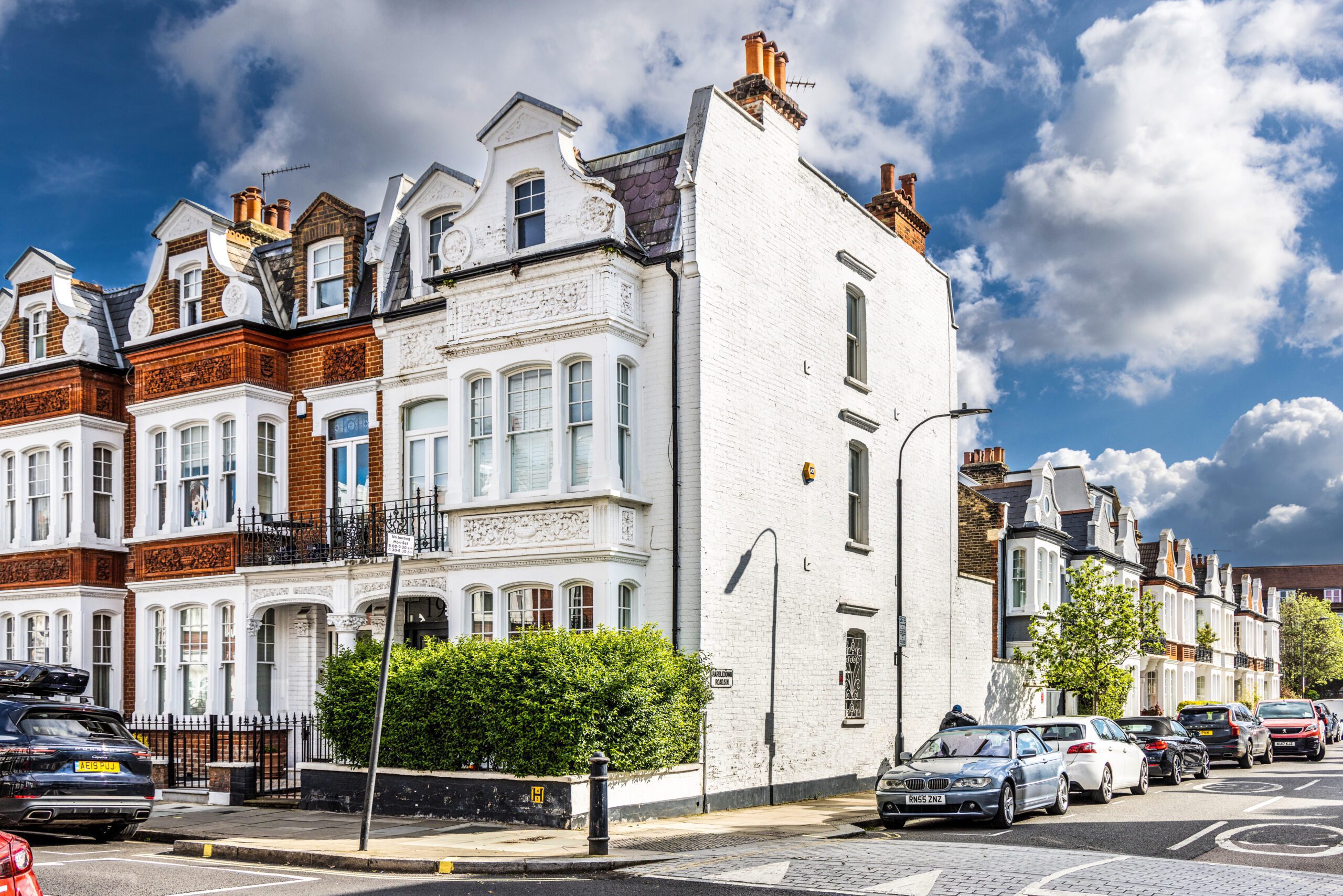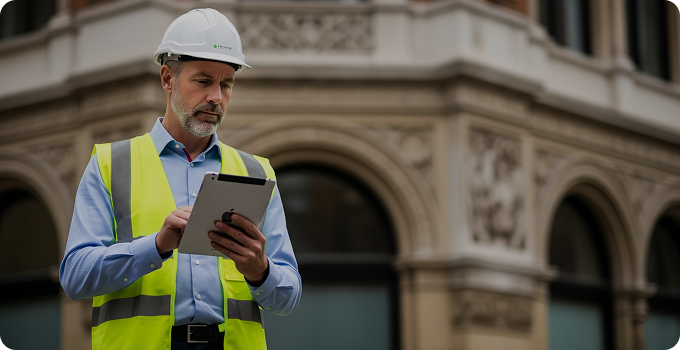





Book Your Damp Survey Now...
Call us for a Site Survey & Support
Request a Callback
Email Us today
London's #1 Property Restoration Expert

Before

After
Edwardian House Restorations
For many people, Edwardian houses are considered the ideal family homes. They are typically large, well-proportioned, solidly built and designed around providing direct access to the garden.
Edwardian buildings make up much of the built landscape in some of London’s most desirable suburbs, but now that they are all over 100 years old, regular repair and maintenance – and sometimes full restoration – is required to keep them at their best.
At Environ Property Services, all our period restoration works are personally overseen by Terry L. Clark, company director and trained member of the Society for the Protection of Ancient Buildings.
Our priority is always to preserve historic features and fabric through the use of matching materials and original building techniques. We approach Edwardian buildings not as contractors but as craftspeople.
Environ Property Services offer the following repair and restoration works for Edwardian houses in and around London:
- Brick cleaning, repointing and repairs
- Timber sash window restoration
- Repair of roof tiles and timbers
- Painting, decorating and joinery
- Loft and basement conversions, renovations and extensions
- Building services such as plumbing, wiring and ventilation
- Damp proofing for rising, penetrating and lateral damp
What are the features of an Edwardian home?
The Edwardian era of architecture was a short lived period between 1900 and the First World War, which, as you would expect, brought construction to a sudden stop. Edwardian buildings are the last to be considered “period”, with everything after being modern.
This era is characterised by the birth of the suburbs. By 1900, central London had been entirely built up, leaving few opportunities for housebuilding. Meanwhile, improved transport connections opened up areas such as Hampstead and Dulwich, which were then on the outskirts of the city and attractive to London’s growing middle class.
With space no longer such a luxury, the Edwardian era saw a proliferation of semi-detached and detached houses. Front doors retreated from the street to make way for porches where people could show off their money and taste while kitchens and utility rooms moved up from the basement to the ground floor.
While Georgian and Victorian houses were tall and thin, the typical Edwardian house was short and wide, often with a steep-pitched roof. They are the classic square with a triangle on top which a child might draw to represent a house.
In terms of style and materials, Edwardian architects rejected the mass produced ornamentation of the late Victorian era, which had come to be seen as tacky. Architects were eager to experiment and draw from a broader range of influences than the largely uniform aesthetics of Victorian homes.
There was a push to return to a more hand-crafted aesthetic, most clearly seen in the birth of the Arts and Crafts movement. Many Edwardian houses were also built in a mock Tudor style, with exposed painted timber, decorative cladding and intricate gable ends. Stained glass even made a comeback, particularly in entranceways.
This lack of standardisation can make it very difficult to predict what trades and materials will be required in the repair or restoration of an Edwardian house. Even on a street where every house was built in the same period by the same architects and builders there can still be variety.
Repair and restoration works for Edwardian buildings
While the size and shape of Edwardian houses changed from the Victorian Era, the building techniques are largely the same and as a result suffer from the same problems.
Damp problems in Edwardian houses
Cavity walls started to appear in Edwardian buildings, but the vast majority were still built from solid brick. By far the most important part of caring for a solid brick wall is allowing it to “breathe”, which refers to the passage of moisture through porous masonry.
Many Edwardian buildings have had the breathability of their walls impeded through the use of inappropriate plaster and renders, heavy handed insulation works or unnecessary damp proofing.
This causes moisture to build up inside the walls which is unable to escape, leading to damp problems and material decay, sometimes so severe it compromises the structural integrity of the wall.
Ironically, our damp proofing work often involves removing damp proofing. Unless the source of damp is from water penetration or a leak, Edwardian buildings function best when restored to their original state.
While we would usually blame all the above on post-war modifications, Edwardians were sometimes guilty of ruining their own walls. This era saw the first widespread use of pebbledash, which was often used to hide poor brickwork.
Brick repair for Edwardian houses
Like Victorian bricks, Edwardian bricks were much softer than modern bricks and were bound with a lime mix mortar. It is very important that any wall repairs or repointing works use materials that match the original as closely as possible.
Many buildings from this era have been damaged by the use of cement mortar during repointing. As cement is harder than Edwardian bricks, the bricks have to absorb all the compressive force, causing them to crack.
Not only does cement mortar damage 100+ year old brickwork, it is also incredibly difficult to remove and can sometimes only be repaired by effectively rebuilding the outer layer of the wall.
Trying to save money by using an inexperienced contractor to repoint your property will cost you far, far more in the long run. Poor repointing is one of the biggest causes of damage to Edwardian buildings.
You may also need your bricks to be cleaned in order to remove inappropriate paint, render or pebbledash. This process must be carried out very carefully so as to minimise damage to the underlying brickwork, though some amount of brick or mortar repair will nearly always be required as well.
Call us now to arrange a quote for Edwardian home renovation, repair and restoration
Before we can work on an Edwardian building we have to thoroughly inspect and research it to identify the ideal balance between value for the client and sympathy for the building and its setting. Listed status, conservation area constraints and covenants may all also affect what we can and cannot do.
To book a visit to your property from our director and member of the Society for the Protection of Ancient Buildings, Terry L Clark, call us now request your call back.
What do I need to know about Edwardian houses?
- The Edwardian era of architecture refers to houses built between 1900 and the First World War.
- Most building techniques unchanged from Victorian era, this means solid brick walls, slate or clay roofs and shallow foundations.
- Decayed pointing, blown brickwork, rotten timbers, missing roof tiles and damp issues are the most common problems in Edwardian homes.
- Edwardian houses are typically set further back from the street and are lower and wider than tall and narrow Victorian houses.
- Style-wise, there was a resurgence of a more hand-crafted aesthetic, with the appearance of Arts and Crafts and mock-Tudor houses.
- Expansion into the suburbs meant more detached and semi-detached homes, and the birth of the classic house-shaped house.
Testimonials.
See What Our Client Says About Us

Our Happy Customer
janine jordan
I don’t normally write reviews, but I honestly can’t fault Environ Property Services or their customer service. I was very stressed with the work that needed doing as I’m super busy, however from the very first visit the team took full control, reassured me, and followed through seamlessly.

Our Happy Customer
Joanna Baron
Don’t you love it when a company lives up to its reviews? I needed the drains and gutters checked and cleared. Booking through Emily was easy and she gave me various options to choose from. Ben and Jack arrived on time, carried out all the work professionally and gave detailed feedback before they left.

Our Happy Customer
Sharon McLeod
Aidan and Ian went above and beyond to sort out our drains and hopefully future proof them. Lovely guys who did everything they could to try and solve some complex problems we have. I’d recommend them to anyone requiring similar work

Our Happy Customer
Sheila Thomas
Environ responded to my enquiry within hours, they were able to give me an appointment quite quickly and they communicated well with me via email. When the operatives arrived to carry out the work they were friendly, polite and helpful. They also resolved the problem.
Damp Quote. Request Your Callback Today
- London Based
- Insurance Backed Guarantee Available
- Informed Advice
- Friendly Service Team


